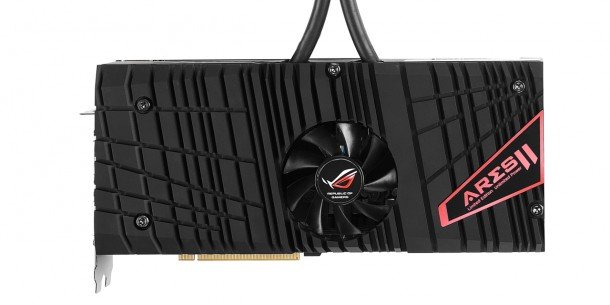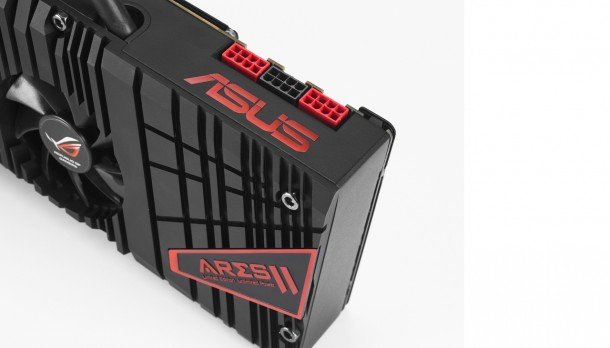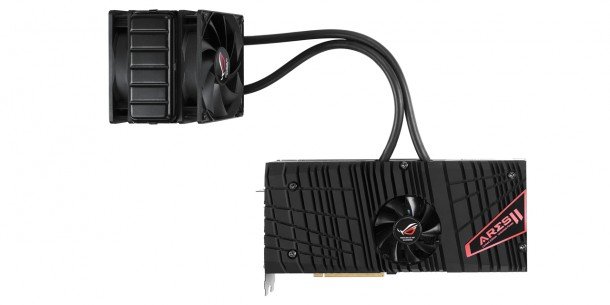Asus unveils the RoG ARES II multi-GPU behemoth. Quake, mortals.

AMD has shown reluctance to release their own-brand HD 7000 range dual-GPU card, leaving affiliate manufacturers like Asus, Club3D and HIS to cobble together their own polygon-crunching beasts. As a result, we've seen a fair number of super-powered graphics cards over the last few months, including the freakishly potent Club3D Radeon HD 7990s - but with the unveiling of the Asus ARES II, things may just be getting a little silly.
Whereas the Club3D cards each held a pair of HD 7970 GPUs running at the 900MHz of the original chips, the Asus Republic of Gamers ARES II ups the ante, simply using straight HD 7970 GHz Edition silicon. That makes for headline-grabbing figures, such as a base clock of 1,050MHz and 6,600MHz memory clockspeeds to back up those bleeding edge GPUs.

Asus isn't relying on the vagaries of active air cooling to keep the chips chilled either, instead opting to use a hybrid liquid/air cooler like the ones you increasingly see strapped to CPUs, like the Seidon 120M . As well as the water blocks attached to the GPU silicon there's an additional 80mm fan inside the card housing allowing the power circuitry and video memory to stay cool too.
This hybrid design means the ARES II has a dual-slot footprint as opposed to the triple-slot design favoured by Club3D.

I can't comment on the actual performance of the board as yet, but I would expect it to outperform the Club3D HD 7990 comfortably, and Asus claims it can best the similarly dual-GPU Nvidia GTX 690 by a margin of 13% yet with operating temperatures around 30ºC lower.
And with Asus' GPU Tweak utility, combined with the serious liquid chiller attached to the chips themselves, it should offer some pretty impressive overclocking chops, too.
Pricing has yet to be announced, but I wouldn't bet on seeing much change from £900.
The biggest gaming news, reviews and hardware deals
Keep up to date with the most important stories and the best deals, as picked by the PC Gamer team.

Dave has been gaming since the days of Zaxxon and Lady Bug on the Colecovision, and code books for the Commodore Vic 20 (Death Race 2000!). He built his first gaming PC at the tender age of 16, and finally finished bug-fixing the Cyrix-based system around a year later. When he dropped it out of the window. He first started writing for Official PlayStation Magazine and Xbox World many decades ago, then moved onto PC Format full-time, then PC Gamer, TechRadar, and T3 among others. Now he's back, writing about the nightmarish graphics card market, CPUs with more cores than sense, gaming laptops hotter than the sun, and SSDs more capacious than a Cybertruck.

